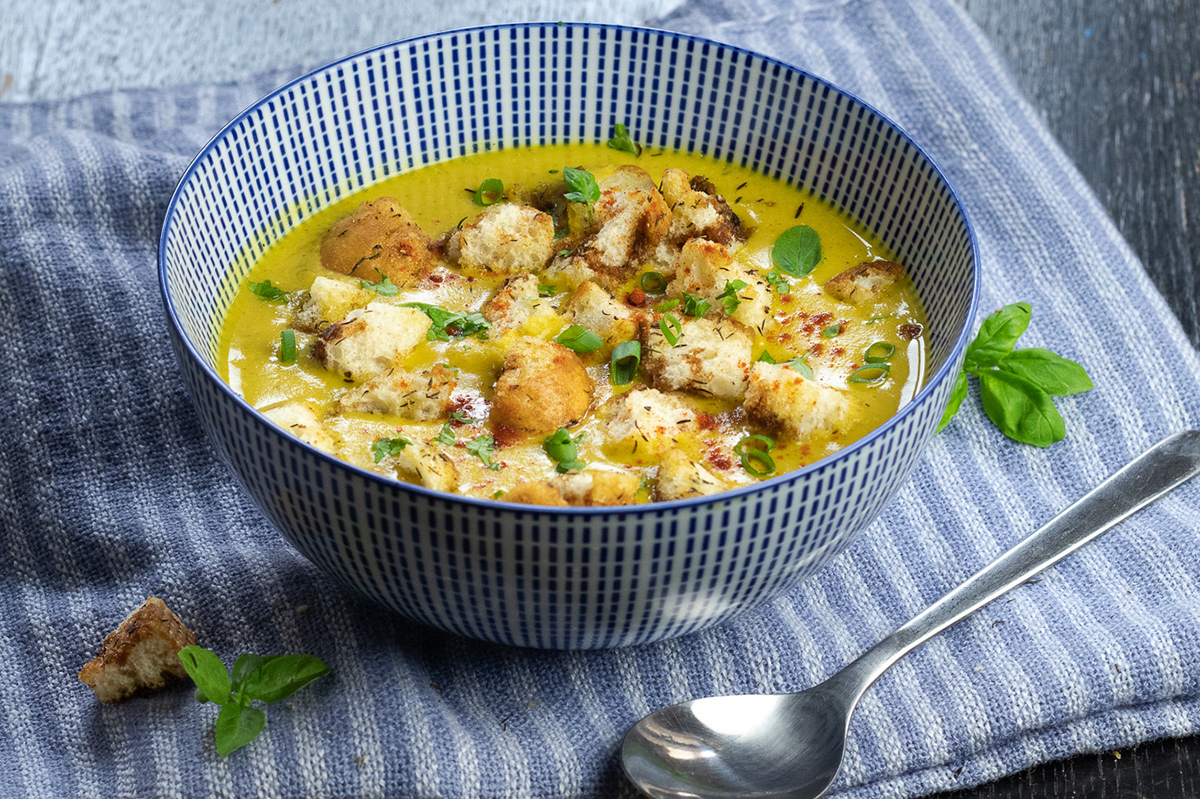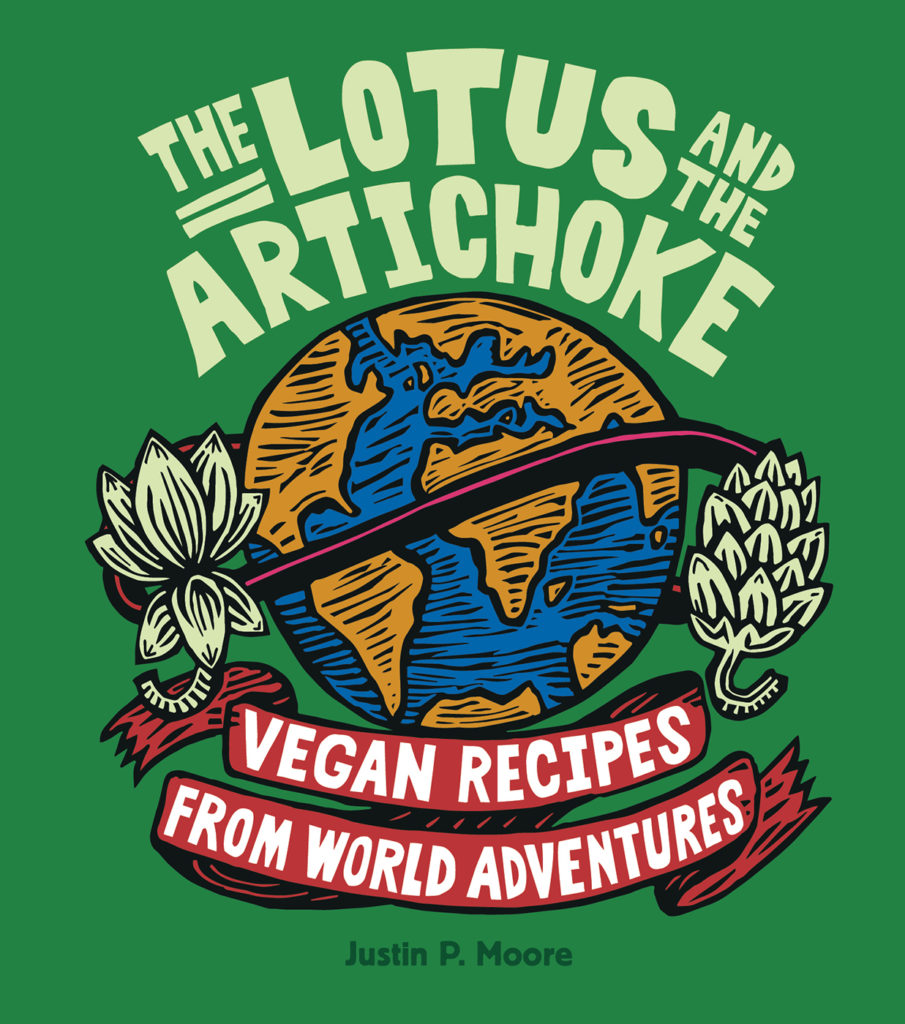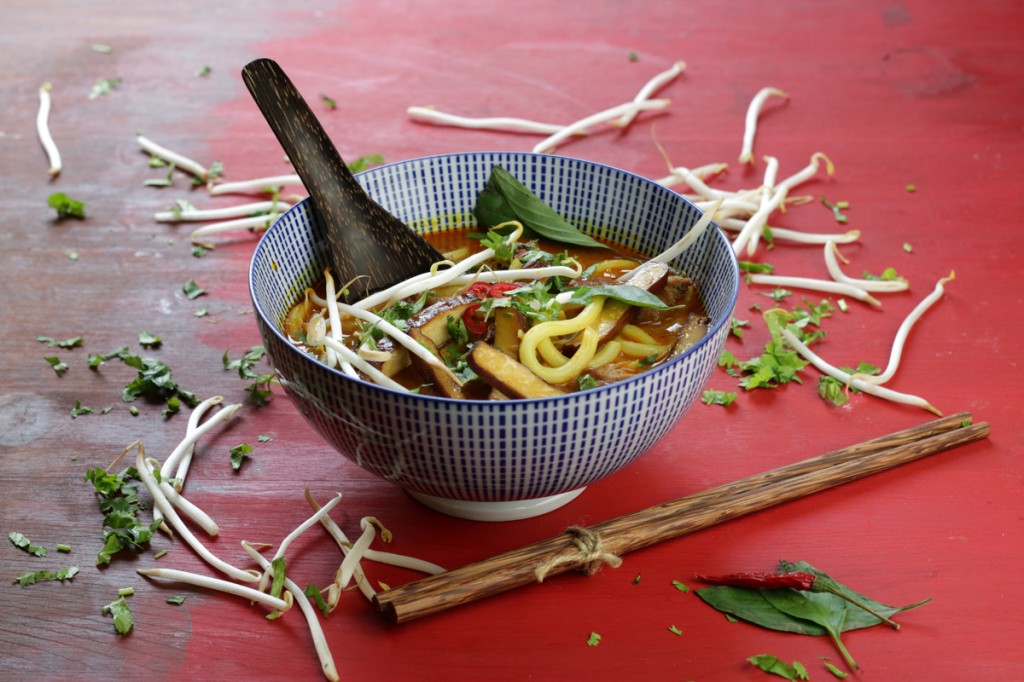
Incredibly, I’d been in Malaysia for almost two weeks before I got to try Laksa, the legendary noodle soup. Even before the trip, I’d read about the intensely loved, powerful and fiery, somewhat-sour soup in food blogs and food guides to Malaysia. I’d checked out plenty of recipes and seen lots of super tasty photos.
Once I got to Malaysia, whenever I asked locals what dishes I had to try, I heard again and again: Laksa! Okay, great, but where? And the answer was: Penang!
Penang was hands-down my favorite place to eat on the Malaysia trip. (Singapore was a fairly close second. Penang was just more artsy, soulful, and real). I collected maps with locations of the best street food in Georgetown (Penang) and scoured the web and my travel guides for addresses of must-try vegetarian restaurants. On my second day in town, I had lunch at the vegan restaurant Sushi Kitchen, and met the chef/owner, who made a list for me of Must-See places and dishes.
That night I went to Luk Yea Yan, a vegetarian Chinese restaurant known for fantastic flavors and inexpensive eats. I ordered up the Laksa soup. Three minutes later my oversized bowl of hot, steaming, bright red soup arrived – with countless ingredients and toppings piled up to the rim. There were at least three kinds of noodles, tofu cubes, soya and seitan chunks, numerous vegetables, about four kinds of fresh herbs – and balanced on top: a soup spoon with a thick, red curry paste on it. I’d read about this…
Traditionally Laksa is usually served with a generous spoonful of rempeh – spicy red curry paste for you to stir in to the hot red broth yourself. I knew what to do. I did it.
A half dozen flavors immediately exploded in my mouth: tamarind, chili, lime, pineapple, cilantro, mint. This was followed by a second wave of flavors: an army of vegetables, tofu, and seitan slices. I slurped down the noodles and paddled pieces of everything with my chopsticks into my hungry jaws. I had to take a break a few times to catch my breath and cool the spice alarm with generous draws on my lemon iced tea. When I was done, my forehead was light with perspiration and my lips and tongue were tingling and alive.
There was never a doubt whatsoever that I would include a vegan recipe for Penang Laksa in my new Malaysia cookbook. Several weeks later (after having tried vegan Laksa soup at least three other times in Malaysia) I was back in my kitchen in Germany and set to work. It took a few attempts to master the recipe, each try better than the last. And then I had it: my own epic Laksa recipe!
Since then, I’ve made it probably ten more times, including for several dinner parties large and small, and plenty of times for lunch. It’s best on cold, cloudy days to fire up your mood and open you up! But I’ve also made it lots of other times, even in the summer, well… just because it’s so awesome and is always a dish guests talk about long after the meal.
Penang Laksa
classic Malaysian noodle soup
serves 2 to 3 / time 45 min
recipe from The Lotus and the Artichoke – MALAYSIA
(Rezept auf Deutsch unten)
- 5 oz (150 g) seitan sliced
- 3.5 oz (100 g) smoked tofu sliced
- 1/3 cup (45 g) pineapple chopped
- 1 Tbs vegetable oil
- 1 Tbs soy sauce or Vegan Fish Sauce
- 7 oz (200 g) udon noodles (cooked)
- 2 1/2 cups (600 ml) water
- 2/3 cup (150 ml) coconut milk
- 1 kefir lime leaf or 1 tsp lime zest
- fresh mint leaves chopped
- fresh coriander leaves chopped
- fresh thai basil leaves chopped
- bean sprouts for garnish
laksa spice paste:
- 4 candlenuts or 2 Tbs cashews soaked 20 min in hot water, drained
- 1 stalk lemongrass chopped
- 1/2–1 large red chili chopped
- 2 cloves garlic chopped
- 1 shallot chopped
- 3/4 in (2 cm) fresh galangal or ginger chopped
- 1/2 tsp paprika ground (more as desired, for red color)
- 1/2 tsp fennel seed ground
- 1/2 tsp coriander ground
- 2 tsp coconut sugar or agave syrup
- 3/4 tsp sea salt
- 1 tsp tamarind paste (seedless)
- 2 Tbs lime juice or lemon juice
- 2 Tbs vegetable oil
- If using dried Udon: Cook, rinse, and drain 3.5 oz (100 g) noodles according to package instructions.
- Blend spice paste ingredients in a small food processor until smooth.
- Heat 1 Tbs oil a large pot or wok on medium high heat. Add sliced seitan and smoked tofu. Fry, turning regularly until edges are browned and crispy, 3–5 min.
- Stir in chopped pineapple. Continue to stir-fry, 2–3 min. Add soy sauce (or Vegan Fish Sauce). Fry 2–3 min. Transfer to a plate or bowl.
- Return pot or wok to medium high heat. Fry blended spice paste until it darkens and oil starts to separate, stirring constantly, 3–5 min.
- Gradually stir in water, coconut milk and kefir lime leaf (or lime zest). Bring to simmer. Add cooked udon noodles. Return to simmer. Cook until noodles have slightly softened, 3–5 min.
- Stir in fried seitan, tofu, and pineapple. Turn off heat. Cover until ready to serve.
- Portion soup and noodles into bowls. Garnish with chopped herbs and bean sprouts. Serve.
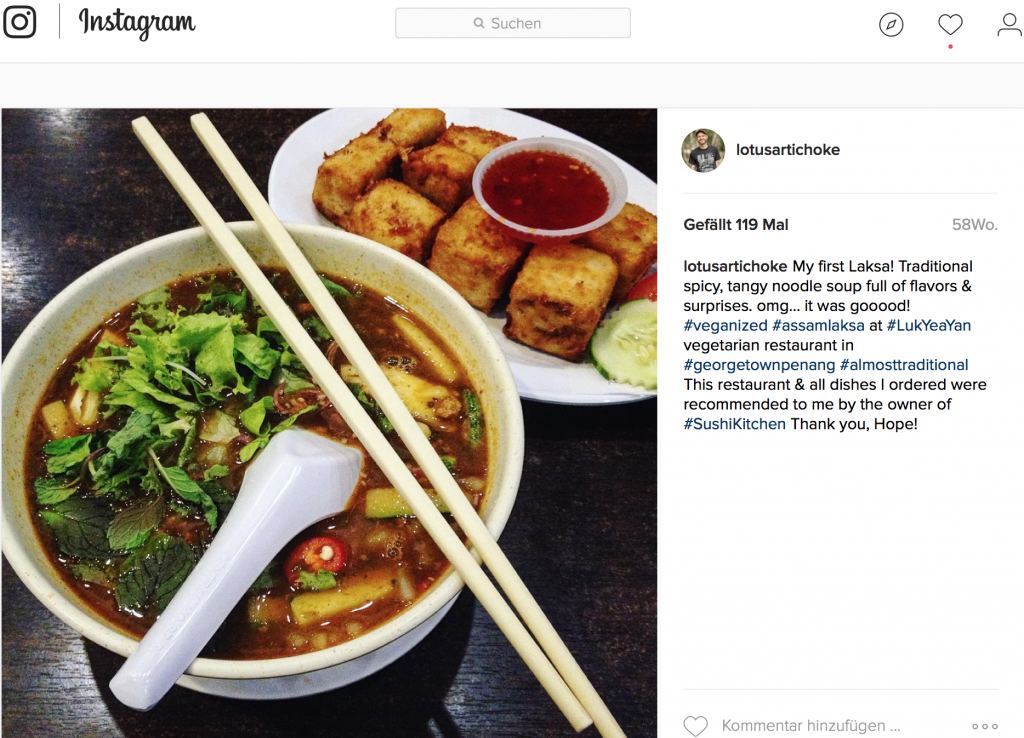
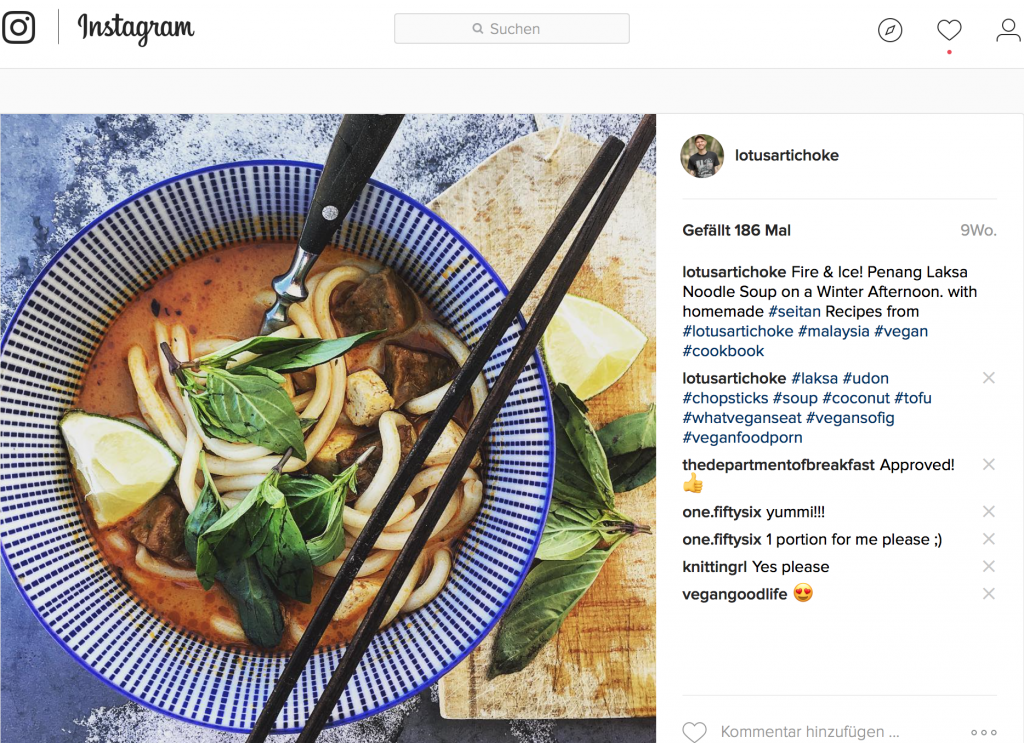
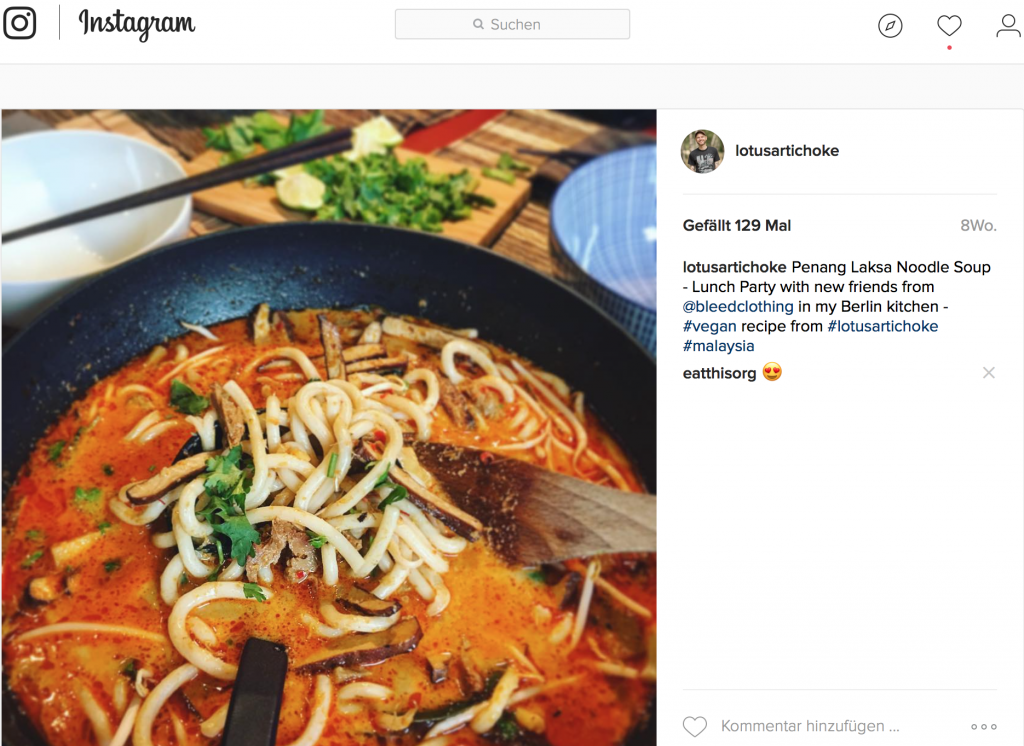
Panang Laksa vegan recipe from The Lotus and the Artichoke – MALAYSIA
(available as printed cookbook & ebook – in English & German)
Penang Laksa
klassische malaysische Nudelsuppe
2 bis 3 Portionen / Dauer 45 Min.
Rezept aus The Lotus and the Artichoke – MALAYSIA
- 150 g Seitan in Scheiben geschnitten
- 100 g Räuchertofu in Scheiben geschnitten
- 1/3 Tasse (45 g) Ananas gehackt
- 1 EL Pflanzenöl
- 1 EL Sojasoße oder Vegane Fischsoße
- 200 g gekochte Udon-Nudeln
oder 100 g trockene Udon gemäß Packungsanweisung gekocht, abgegossen - 2 1/2 Tassen (600 ml) Wasser
- 2/3 Tasse (150 ml) Kokosmilch
- 1 Kaffirlimettenblätter oder 1 TL Limettenabrieb
- frische Minzblätter gehackt
- frische Korianderblätter gehackt
- frische Thaibasilikumblätter gehackt
- Bohnensprossen zum Garnieren
Laksa-Gewürzpaste:
- 4 Keriminüsse oder 2 EL Cashewkerne in heißem Wasser eingeweicht, abgegossen
- 1 Stängel Zitronengras gehackt
- 1/2–1 große rote Chilischote gehackt
- 2 Knoblauchzehen gehackt
- 1 Schalotte gehackt
- 2 cm frischer Galgant oder Ingwer gehackt
- 1/2 TL Paprikapulver (nach Bedarf mehr, fürs Rot)
- 1/2 TL Fenchelsamen gemahlen
- 1/2 TL Koriander gemahlen
- 2 TL Kokosblütenzucker oder Agavensirup
- 3/4 TL Meersalz
- 1 TL Tamarindenpaste (ohne Samen)
- 2 EL Limetten– oder Zitronensaft
- 2 EL Pflanzenöl
- Zutaten für die Gewürzpaste in einer kleinen Küchenmaschine glatt pürieren.
- In einem großen Topf oder Wok 1 EL Öl auf mittlerer Flamme erhitzen. Seitan– und Räuchertofuscheiben hineingeben. 3 bis 5 Minuten unter mehrmaligem Wenden braten, bis die Ränder braun und knusprig sind.
- Gehackte Ananas einrühren. 2 bis 3 weitere Min. braten. Sojasoße oder Vegane Fischsoße unterrühren. Weitere 2 bis 3 Min. braten. Auf einen Teller oder in eine Schüssel geben.
- Wok oder Topf erneut erhitzen. Gewürzpaste 3 bis 5 Min. Unter ständigem Rühren darin braten, bis sie dunkel wird und das Öl beginnt, sich zu trennen.
- Kaffirlimettenblätter oder Limettenabrieb und nach und nach Wasser und Kokosmilch einrühren. Zum Köcheln bringen. Gekochte Udon-Nudeln hineingeben und erneut zum Köcheln bringen. Nudeln 3 bis 5 Min. kochen, bis sie leicht weich sind.
- Seitan, Tofu und Ananas einrühren. Flamme abstellen. Bis zum Servieren abgedeckt ziehen lassen.
- Suppe und Nudeln in Schüsseln anrichten. Mit Kräutern und Bohnensprossen garnieren und servieren.
Vegan Rezept für Penang Laksa aus The Lotus and the Artichoke – MALAYSIA



